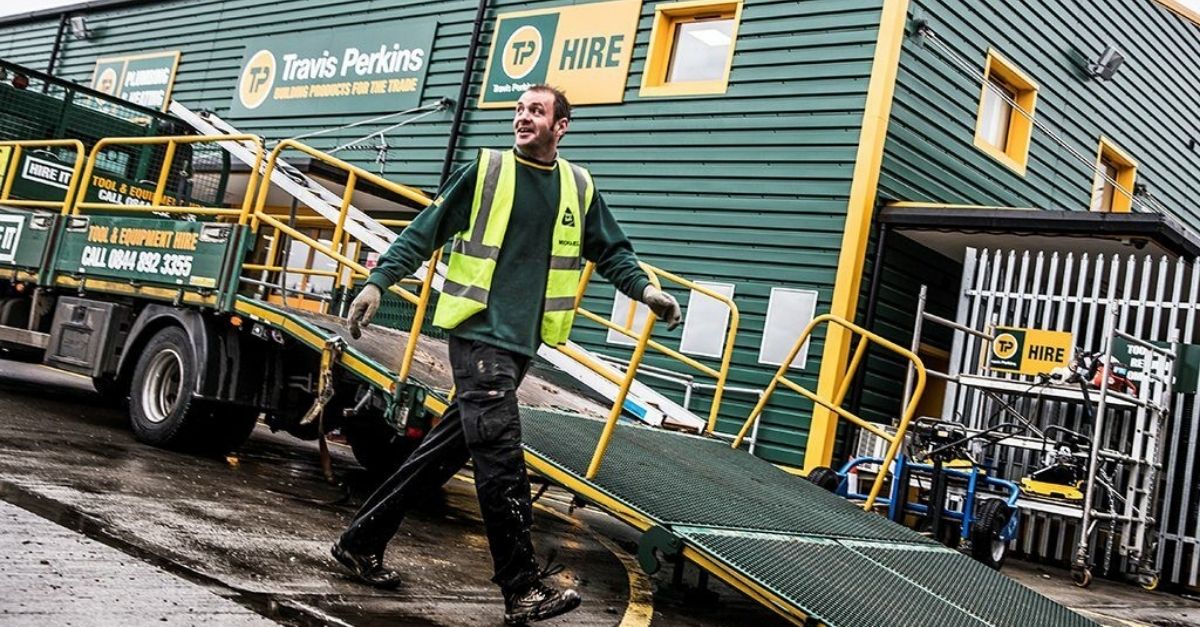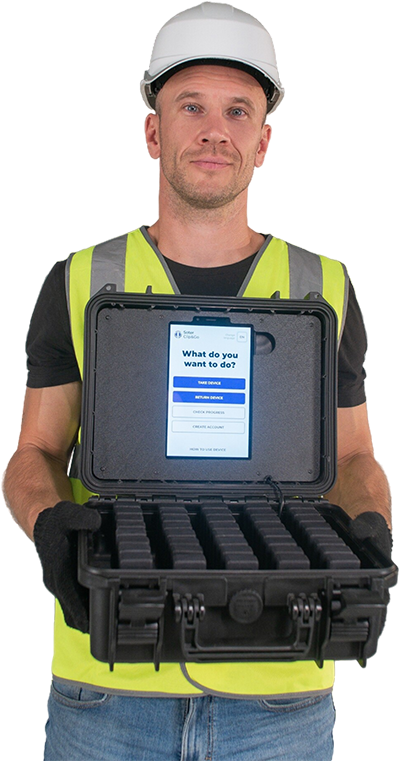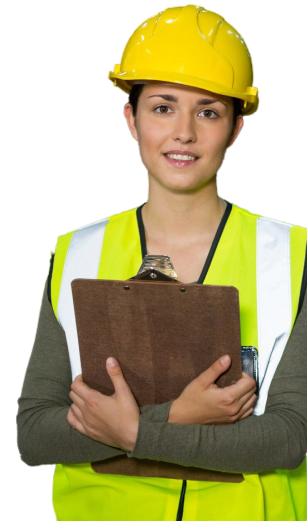Wearable Tech Reduces Musculoskeletal Injuries by 55%
Being actively safe at work is more effective when risks can be tracked, compared, shared, learning can be adapted into everyday behaviour and workers have the agency to manage their own musculoskeletal wellbeing. Toni-Louise Gianatti explains how wearable tech has been adopted by Travis Perkins Group PLC to provide a new, accepted, and proven method of assessment and training to decrease hazardous movements for their workers and reduce musculoskeletal injuries in BSS by 55%.

Being actively safe at work is more effective when risks can be tracked, compared, shared, learning can be adapted into everyday behaviour and workers have the agency to manage their own musculoskeletal wellbeing. Toni-Louise Gianatti explains how wearable tech has been adopted by Travis Perkins Group PLC to provide a new, accepted, and proven method of assessment and training to decrease hazardous movements for their workers and reduce musculoskeletal injuries in BSS by 55%.
The development of new technology aimed at improving worker safety is increasingly being adopted and accepted within industrial workplaces, such as wearables to track hand arm vibration, cognitive fatigue, wearable IoT devices, and GPS trackers for distributed workforces. Wearable posture tracking and the ground-breaking possibilities to improve and significantly change movement behaviour at work is also moving at a fast rate. Combining collection of objective assessment data, real-time biofeedback, and self-managed microlearning has proven to be an effective training method. A recent study published in the Journal of Biomechanics notes that real-time feedback in the form of an auditory alert when a hazardous movement is executed elicits a negative reinforcement which promotes a change in movement behaviour (Punt 2019). Results indicated that using real-time feedback is effective in reducing lower back load. This enhancement in task and proprioceptive awareness can also elicit worker feedback and increase the likelihood of leveraging their task expertise to introduce appropriate engineering controls, make substitutions or eliminations.
Workplace Injury Cost
Workplace injuries cost the individual, the organisation and society. A paper published in October 2019 by Health & Safety Executive, taken from Labour Force Survey, states that during the 2018/19 period an estimated 6.9 million working days were lost due to work related musculoskeletal disorders. An average of 14 days lost for each case. Of these, back disorders accounted for 2.8 million days lost.
Fitting the task to the human is not always possible owing to environmental limitations, or lack of appropriate technology or equipment. There is also difficulty for an assessor to truly understand the task as they lack expertise in the work. The worker understands the task but often lacks the awareness of the risks involved. The ideal scenario of engineering out hazards or eliminating them is ultimate but many industries remain reliant on manual workers to have the awareness and ability to do the job in ways that do not risk their musculoskeletal health. Equipping workers with the learning tools and capacity to feel responsible for their own bodies and movement can help bridge the gap between limitations in task design and musculoskeletal safety.
Data-Driven Approach
The insecurities once felt about employee tracking within industrial workplaces has quelled over time due to the practicality, opportunities and safety benefits of objective insight. General acceptance and union buy-in arises from the understanding that wearable tech is not aimed at providing new methods for Digital Taylorism but keeping the focus of wearable programs on safety, providing workers agency over engaging with their own learning, prioritising the ability for them to access their own data, avoiding unnecessary tracking methods within the technology and providing the option to anonymise data. Using data gathered to objectively assess workers in manual handling techniques, and capture hot spots most at risk such as anthropometric challenge, for example, a worker unable to bend down to tools with good technique on a lift access platform due to space constraints, leading to tool baskets to be implemented, is invaluable insight for change implementation.
The Solution
Soter Analytics provides companies with a 10-day manual handling training program using a wearable device and in-app tutorial providing results from the individual worker to the upper management via a web-based dashboard, and back to the worker in an engaging and easy to understand mobile app. The SoterCoach device a 2 x 4cm lightweight, accurate, long-lasting, resilient sensor which attaches to the back of a shirt neck providing real-time biofeedback risk alerts to the worker on the job. The individual movement data is then available to the worker in the SoterCoach app providing insight on the specific hazardous movements they regularly make, personalised coaching to provide context to the notifications, and recommendations on what could be done differently.
The SoterCoach Training via the App
The intervention of in situ micro-learning – bite size chunks of daily information – with personalised coaching encouraging increased retainability and likelihood of behavioural change due to workers being able to self-pace their training at a time that suits them during their day.
Management dashboard – backend data
Machine learning algorithms allow filtering of the complex data noise to really see what’s going on, giving the unique ability to predict the movement patterns of workers and profiling of hazardous tasks that will impact their long-term physical health.
Biofeedback
The sensor identifies hazardous movements; twist and poor-technique sagittal flexion, and the compounders for predisposition to injury; repetition, intensity and static postures (Marras 2000). Acceptable intensity of lifting has previously been defined using the NIOSH lifting equation, however this standard generalises capability of genders, does not take into account individual body capabilities or previous injury status. Using many characteristics of lifting movement within the sensor algorithm, actual individual lifting capability can be assessed and if a lift is too heavy, and/ or the technique is poor, this data will be gathered. If the movement is deemed to be a hazardous movement by the sensor, the worker will be provided with immediate auditory and vibrotactile feedback. Biofeedback risk alerts tailored to the individual promote increased proprioception and movement development opportunities, aiding behavioural change. Imprinting movement awareness using this technique can greatly help with increasing and permanently changing workers position sense and their own movement safety.
Travis Perkins Group PLC: Industrial Case Study
This SoterCoach solution was implemented within Travis Perkins Group’s specialist businesses, BSS, CCF and Keyline. BSS, the largest and leading distributor of pipeline and heating solutions in the UK, was the first to adopt the technical solution. Travis Perkins prides itself on ‘Keeping People Safe’ which is a core value within their exemplary health & safety culture. The first longitudinal outcome data of impact of SoterCoach on musculoskeletal disorders (MSDs) was announced and stated a 55% drop in musculoskeletal injuries. Vimel Budhdev, Head of Health, Safety and Environment at Travis Perkins Specialist Businesses said “Using innovative ideas is what we strive to do. Adopting the SoterCoach solution to link in with one of the problems that we have within the business, [manual handling], and employing this device to help eliminate, reduce and also teach people the right way of doing manual handling has been the perfect marriage.”
The solution was implemented across very large and diversely located workforce, with workers within branches conducting daily manual handling tasks, and delivery drivers. Each worker set up and managed their own progress through the program via the app, tracking their data and participating in 3 – 5 minute chunks of daily learning. As the SoterCoach solution is scalable across on-site and delivery workers who do not spend time on site, a large number of workers achieved their goal of reducing injury risk without impacting their time. All the data was made available to management via a web-based dashboard and was used for debriefing sessions following the program, encouraging workers to share their experiences and recommendations of alterations to their work.
Mr. Budhdev reported that not only has user-engagement been positive and enthusiastic, the reduction of high-risk movements has been paramount. “In one simple instance, the device highlighted that one of our colleagues was bending at a low level roughly around 100 times a day so by easily moving some things around we have saved around 26,000 high-risk bending movements in a year, you can appreciate that small device pointing us in the right direction”.
Here we present strong evidence for the use of wearable technology and analytics in industry, when used by health and safety professionals in collaboration with industrial workers, to identify risky tasks or environments and elicit data-driven reasons for making investment into automations or engineered solutions. This is an update on out-dated and inaccurate ergonomic assessment, combined with a consistent and engaging approach to manual handling without the loss of time to a classroom, and allowing on-site ergonomists to deploy their time to solving problems rather than trying to find them.
About Soter Analytics
Soter Analytics is a global safety science company producing AI-supported wearable solutions that reduce the risk of ergonomic injuries in the workplace. Soter wearables are widely used in logistics, manufacturing, healthcare and other industries, helping leading companies to prevent up to 55% of back & shoulder musculoskeletal injuries.
To see how Soter Analytics can help you improve safety behaviour, engage employees to self-manage their training and prevent workplace ergonomic injuries, simply Book a FREE Demo today.
References
Marras, W. (2000). Occupational low back disorder causation and control. Ergonomics, 43(7), 880–902.
Punt, M., Nematimoez, M., Van Dieën, J., Kingma, I., & Punt, M. (2019). Real-time feedback to reduce low-back load in lifting and lowering. Journal of Biomechanics, 109513–109513.


